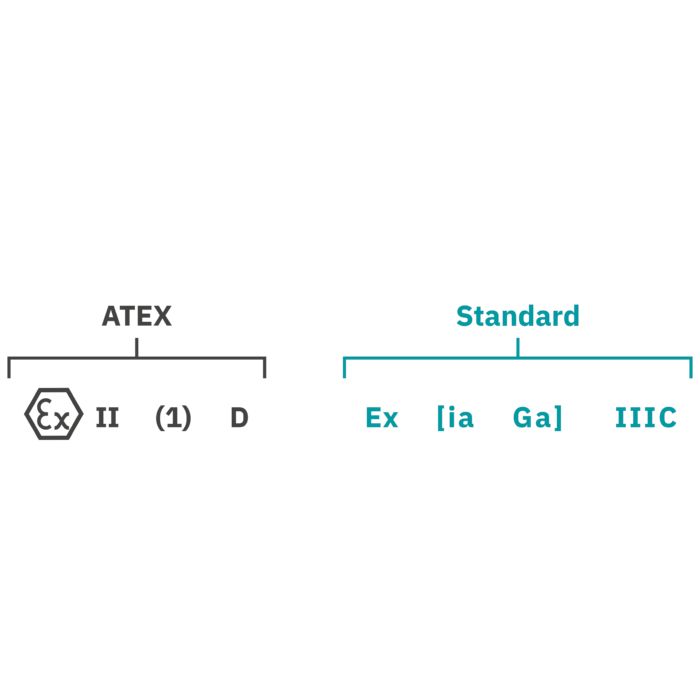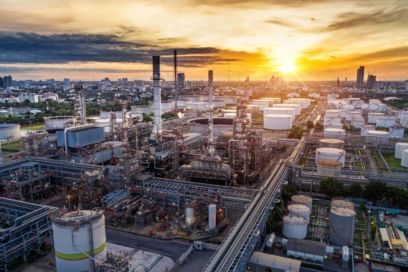
ATEX
II – equipment group: I = mining | II = all non-mining Ex areas
1 – equipment category: 1 = suitable for zone 0/zone 20
G – atmosphere: G = gas
IEC/EN
i – type of protection: i = intrinsic safety
a – protection level: a = suitable for zone 0/zone 20
II – groups: II = gas
C – subgroups: C = hydrogen, acetylene, carbon disulfide
T6 – temperature class: T6 = 85°C
Ga – equipment protection level: G = gas | a = suitable for zone 0





























